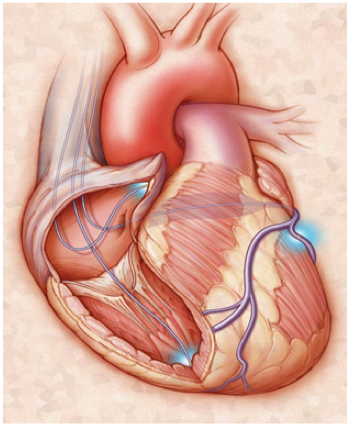
If someone is symptomatic with heart failure, and if there is evidence that the heart’s walls are not contracting in a coordinated manner, then a specific kind of pacemaker may be helpful. This is called cardiac resynchronisation therapy (“CRT”) or biventricular pacing, and involves positioning pacemaker wires (or “leads”) on both sides of the heart (see image). Rather than the usual function of a pacemaker – to prevent the heart from going too slowly – the purpose of this treatment is to re-coordinate the heart, thereby improving its pumping efficiency and alleviating symptoms due to heart failure.
This kind of treatment can be combined with the function of a defibrillator (ICD), when appropriate (CRT-D) or as a pacemaker alone (CRT-P).